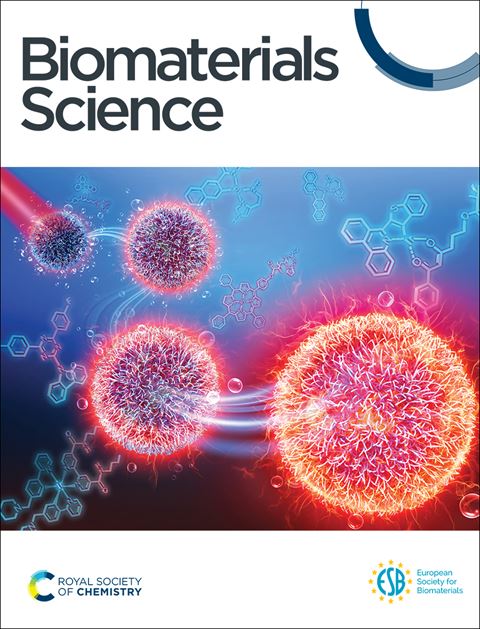The Case for Poly(ylides) as a Class of Charge-Neutral, Hydrophilic Polymers with Applications in Biomaterials Science
IF 5.8
3区 医学
Q1 MATERIALS SCIENCE, BIOMATERIALS
引用次数: 0
Abstract
Many applications of biomaterials require hydrophilic polymers as building blocks, including hydrogels and nanomedicinal devices. Besides enabling sufficient swelling properties in aqueous environments, hydrophilic polymers provide hydration layers, which are considered a major requirement when designing non-fouling surfaces and materials. For the last few decades, polyethylene glycol has been seen as the golden standard for such applications. However, reports on its stability and immunogenicity have urged chemists to identify alternatives with comparable or superior properties. In addition to biopolymers, zwitterionic polymers have gained increasing attention by effectively offering an overall charge-neutral scaffold capable of forming strong hydration layers. Driven by an enhanced understanding of the structure-property relationship of zwitterionic materials, poly(ylides) have emerged as a new class of hydrophilic and charge-neutral polymers. By having the negative charge adjacent to the positive charge, ylides offer not only a minimal dipole moment but also maintain their overall charge-neutral nature. Despite some early reports on their synthesis during the 1980s, polymeric ylides were largely overlooked as a class of polymers, and their utility as unique hydrophilic building blocks for the design of biomaterials and nanomedicinal tools remained elusive. In recent years, several groups have reported N-oxide and carbon-centered ylide-based polymers as highly effective building blocks for the design of antifouling materials. Here, by reviewing recent progress and understanding of structure-property relationships, arguments are provided explaining why polymeric ylides should be classified as an independent class of hydrophilic polymers. Consequently, the author concludes that the term 'poly(ylide)' or 'polymeric ylides' should be routinely used to adequately describe this emerging class of polymers.聚酰亚胺作为一类电荷中性亲水性聚合物在生物材料科学中的应用实例
生物材料的许多应用都需要亲水性聚合物作为构件,包括水凝胶和纳米药物装置。亲水性聚合物除了在水环境中具有足够的溶胀特性外,还能提供水合层,这被认为是设计防污表面和材料时的一项主要要求。过去几十年来,聚乙二醇一直被视为此类应用的黄金标准。然而,有关其稳定性和免疫原性的报告促使化学家们寻找具有类似或更优特性的替代品。除生物聚合物外,齐聚物聚合物也越来越受到关注,因为它能有效地提供整体电荷中性支架,并能形成强大的水合层。随着人们对齐聚离子材料结构-性能关系认识的加深,聚酰亚胺已成为一类新型的亲水性电荷中性聚合物。通过使负电荷与正电荷相邻,酰化物不仅能提供最小的偶极矩,还能保持其整体电荷中性的性质。尽管早在 20 世纪 80 年代就有一些关于合成醯化物的报道,但醯化物作为一类聚合物在很大程度上被忽视了,它们作为独特的亲水性构件在设计生物材料和纳米药物工具方面的用途仍然难以捉摸。近年来,一些研究小组报道了以 N-氧化物和碳中心酰亚胺为基础的聚合物,它们是设计防污材料的高效构件。这里,通过回顾最新进展和对结构-性能关系的理解,作者提出了一些论点,解释了为什么应将聚合酰化物归类为一类独立的亲水聚合物。因此,作者得出结论,"聚(ylide)"或 "聚合酰化物 "这一术语应常规用于充分描述这一类新兴聚合物。
本文章由计算机程序翻译,如有差异,请以英文原文为准。
求助全文
约1分钟内获得全文
求助全文
来源期刊

Biomaterials Science
MATERIALS SCIENCE, BIOMATERIALS-
CiteScore
11.50
自引率
4.50%
发文量
556
期刊介绍:
Biomaterials Science is an international high impact journal exploring the science of biomaterials and their translation towards clinical use. Its scope encompasses new concepts in biomaterials design, studies into the interaction of biomaterials with the body, and the use of materials to answer fundamental biological questions.
 求助内容:
求助内容: 应助结果提醒方式:
应助结果提醒方式:


